Box blight and the damage caused by box tree caterpillars on box hedges can be significant. No wonder that the box tree caterpillar has been announced as the top critter in the 24th RHS annual pest and disease ranking – for the third year running.
It’s based on thousands of gardener inquiries, and the pesky box tree caterpillar has brought more inquiries than the rest of the top five combined.
But what does it look like, what is box blight, how does it damage plants, and is there anything we can do to eradicate it?
Recommended: Boost wildlife and reduce pollution by planting a hedge.
What is box blight?
The cause of box blight is the box tree caterpillar. The box tree moth, originally from East Asia, arrived in Britain in 2007, but it wasn’t until 2011 that larvae were spotted in private gardens in the home counties and it still proving a problem, particularly for gardeners in the southeast.
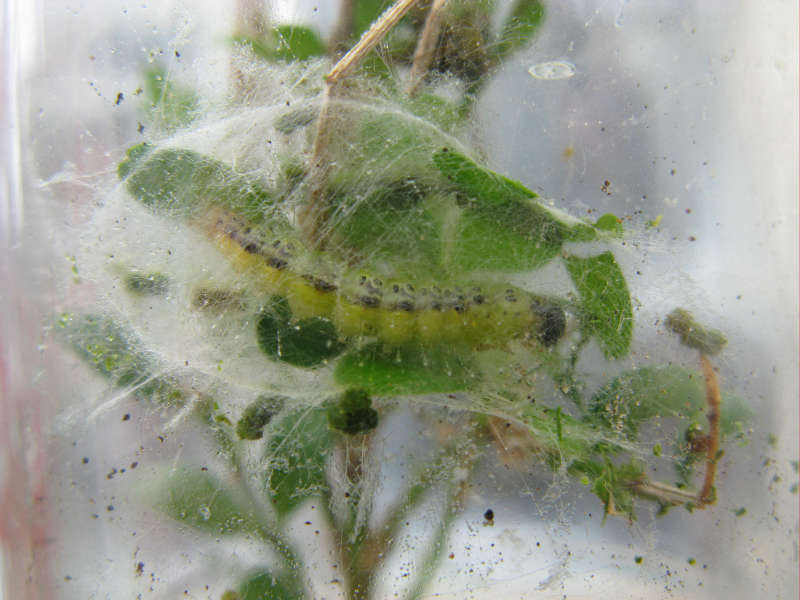
The box tree caterpillars feed within webbing, completely defoliating box plants. Between 2015 and 2016, the RHS received more than 800 reports of the moth, jumping to more than 3,000 in 2017 and more than 6,000 in 2018.
It’s native to East Asia but became established in Europe in 2007, although it wasn’t reported in private gardens until 2011. The caterpillar is the larvae of a box tree moth, which feeds on box plants.
It is most active from April to October. It overwinters as small caterpillars, hidden between box leaves that have been spun together with silk in late autumn, and completes its development in spring.
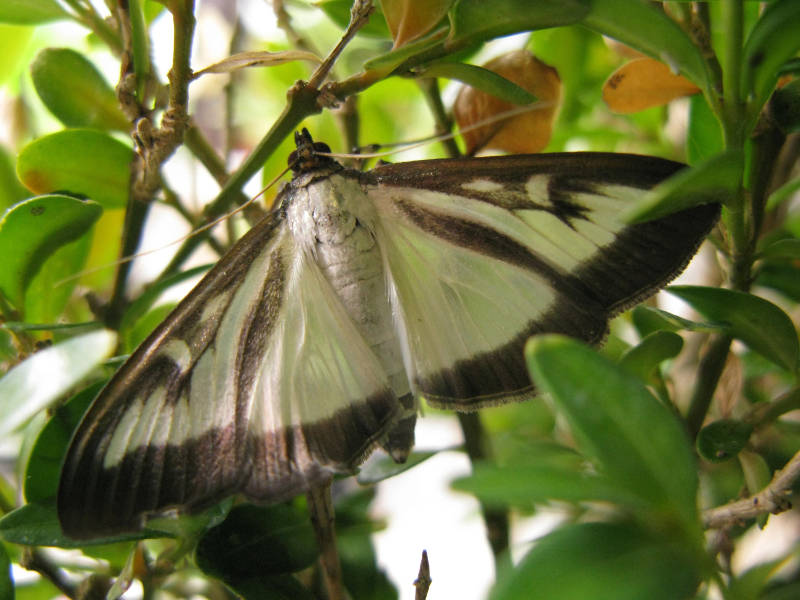
According to the EBTS (European Boxwood and Topiary Society), adult moths can fly up to 10km during their life and start laying eggs two to three days after they start flying. Each female can lay up to 700 eggs.
Recommended: Build a wildlife-friendly garden for World Wildlife Day.
What are the signs of box blight?
You may simply see the box tree caterpillars or the webbing that they produce which covers their feeding area. Box plants can also show dieback areas, which are particularly visible when plants have been trimmed.
The eggs, which are pale yellow, can be spotted on the underside of box leaves. Pupae are hidden in a cocoon of white webbing, which is spun among twigs and leaves.
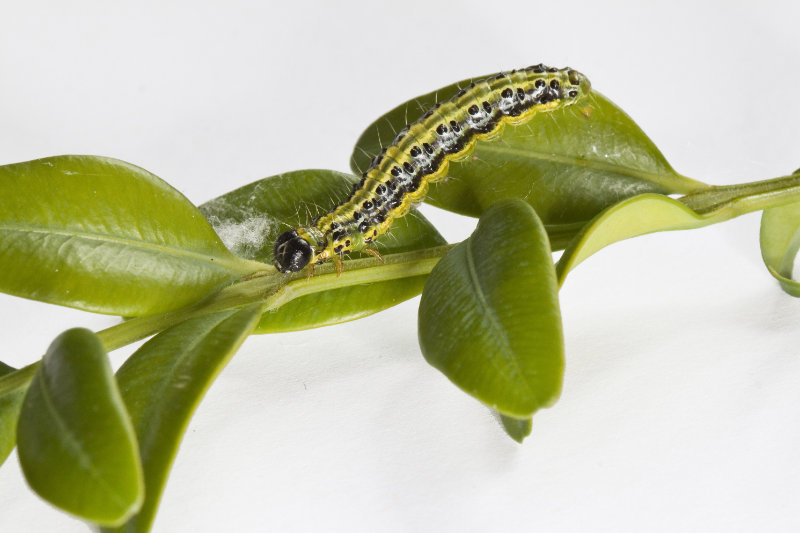
Newly hatched box tree caterpillars have black heads and a greenish-brown body and can reach up to 4cm at maturity, when their colour will have turned to greenish-yellow with thick black and thin white stripes along the body. Adult moths have white wings with a brown border with a wingspan of around 4cm.
How bad is box blight?
Box blight, a fungal disease which appeared in Britain in the 1990s, causes the leaves to brown and eventual defoliation, as stems die back. The RHS teams anticipate, however, that box blight will be down due to the forecast largely warm and dry weather this summer.
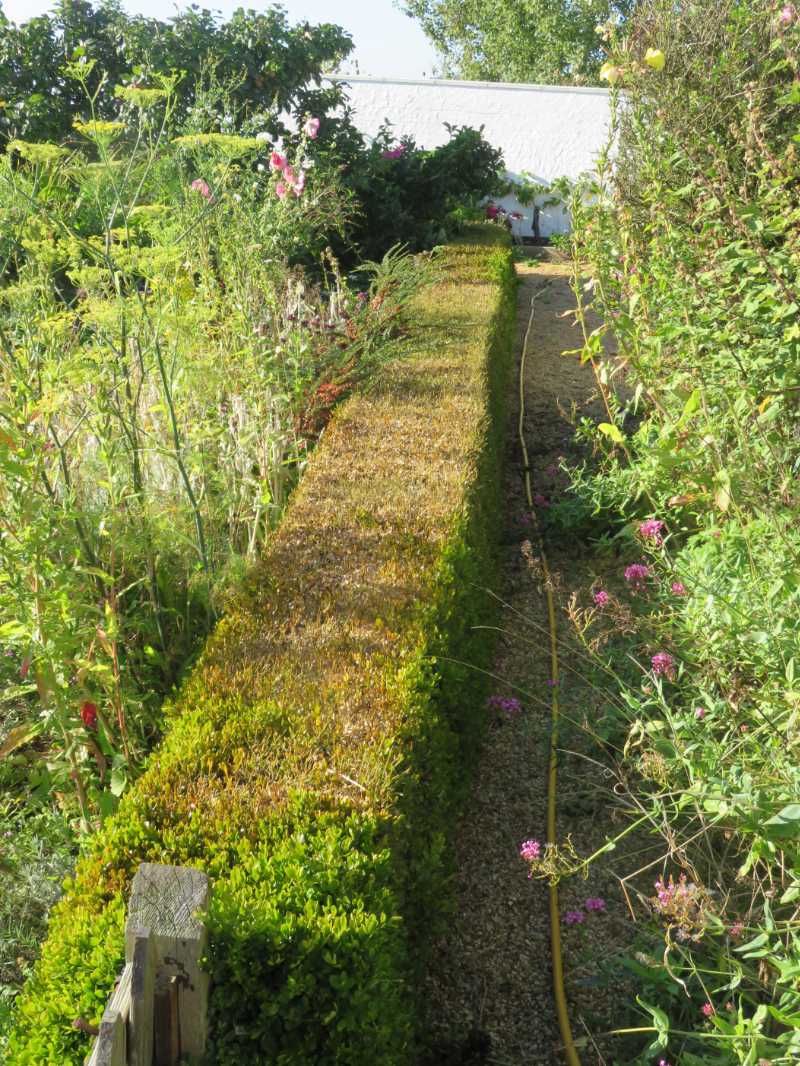
In many cases the caterpillars cause severe defoliation. Where it has become established, particularly in the south-east, it is likely to pose a recurring problem throughout the growing season and in subsequent years.
The moth is also becoming more common in other regions of England, and has been spotted in parts of Wales, Scotland and Ireland.
How can you control box blight?
If you’re going down a non-chemical route, remove the caterpillars by hand. To monitor adult activity, you can buy pheromone traps. Alternatively, use a nematode, sold as fruit and vegetable protection, which will provide some biological control.
The yellow, green and black caterpillars may be difficult to see unless you look hard, but if you find them, pick them off. For larger outbreaks you may have to go to the garden centre or online for a biological control product.
EBTS advises gardeners to carefully comb through the plants with a small hand claw/rake to remove the cobwebbing and clear away the debris under the plants. It may be easier to put a cloth under the plants to catch the debris.
As a last resort, the RHS suggests you might consider an alternative to box, such as Berberis darwinii ‘Compacta’, Euonymus fortunei or various pittosporums which have small leaves and can be trimmed into a neat hedge.
Will your box recover?
If you want to persevere with your box, the blight doesn’t kill the roots so you may be able to revive it, but not without a lot of TLC. To aid its recovery, cut out damaged areas in dry weather, make sure your sharp shears are disinfected every time you use them and don’t compost the infected clippings.
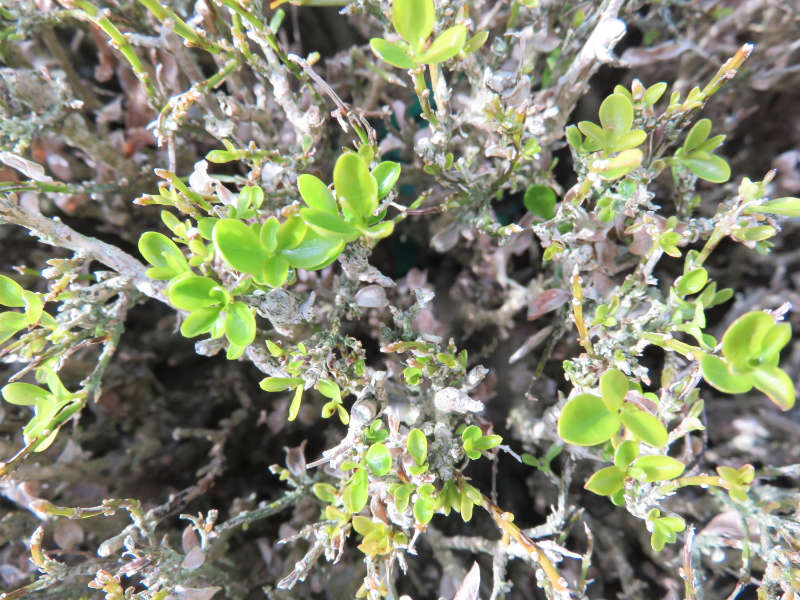
Good plant hygiene is important if you want to prevent further outbreaks, so remove fallen leaves and debris from the ground around your box, make sure there’s good air circulation and don’t water them from above.
In spring, keep box strong by giving them a feed of blood, fish and bone meal.
Recommended: Roses in autumn – garden pruning and rose care.
What are alternatives to box?
If your box hedges and topiary have been decimated by box blight and box tree caterpillars in recent years, you might want to try some alternatives.
The problem is that we rely on box for so many things – topiary, carefully clipped hedging and shapely border edges. It’s easy to keep neat and tidy, while its small evergreen leaves make a terrific foil for brightly coloured flowers.
If you don’t want to risk the box tree moth or box blight ruining your prized topiary and hedging, could you plant something which won’t be affected?
Guy Barter, RHS chief horticulturist, recommends the following alternatives:
1. Japanese holly (Ilex crenata)
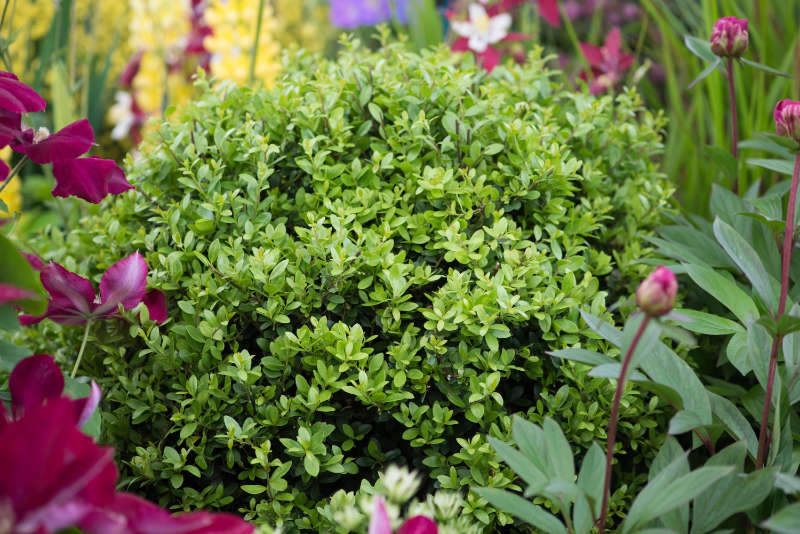
If you want a plant which looks like your prized box, then this slow-growing evergreen is hard to beat. It needs light, well-drained slightly acid soil in sun or partial shade and makes an excellent low hedge.
2. Euonymus japonica
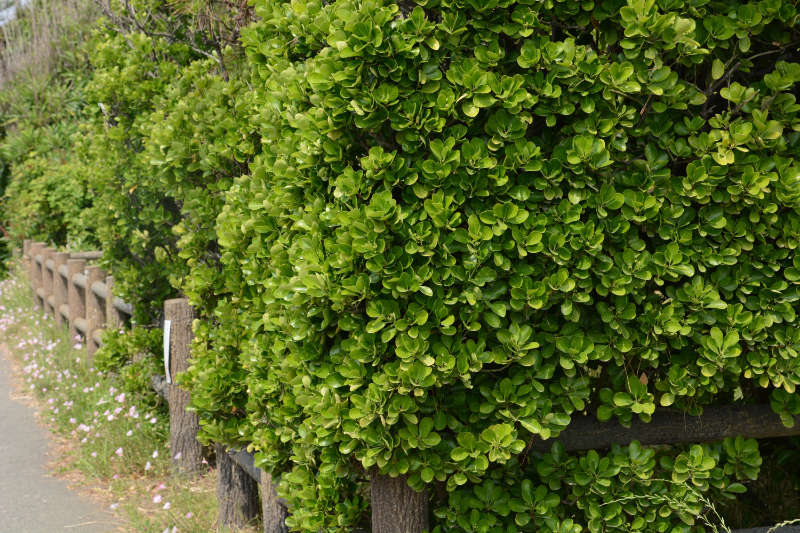
Dwarf cultivars such as ‘Jean Hughes’ are very robust and perform well in hedge or topiary form. It also boasts a lovely mossy foliage.
3. Lonicera nitida
This is easy to grow and inexpensive, but it is more vigorous than box so will need trimming several times a year. However, it will quickly produce a sturdy hedge and can easily be shaped for topiary.
4. Osmanthus x burkwoodii
This dense, slow-growing, large evergreen shrub with pretty dark green, ovate leaves, 2.5-5cm in length, offers the added bonus of clusters of small, highly-scented white flowers in spring, occasionally followed by a few black fruits in autumn.
5. Pittosporum tenuifolium
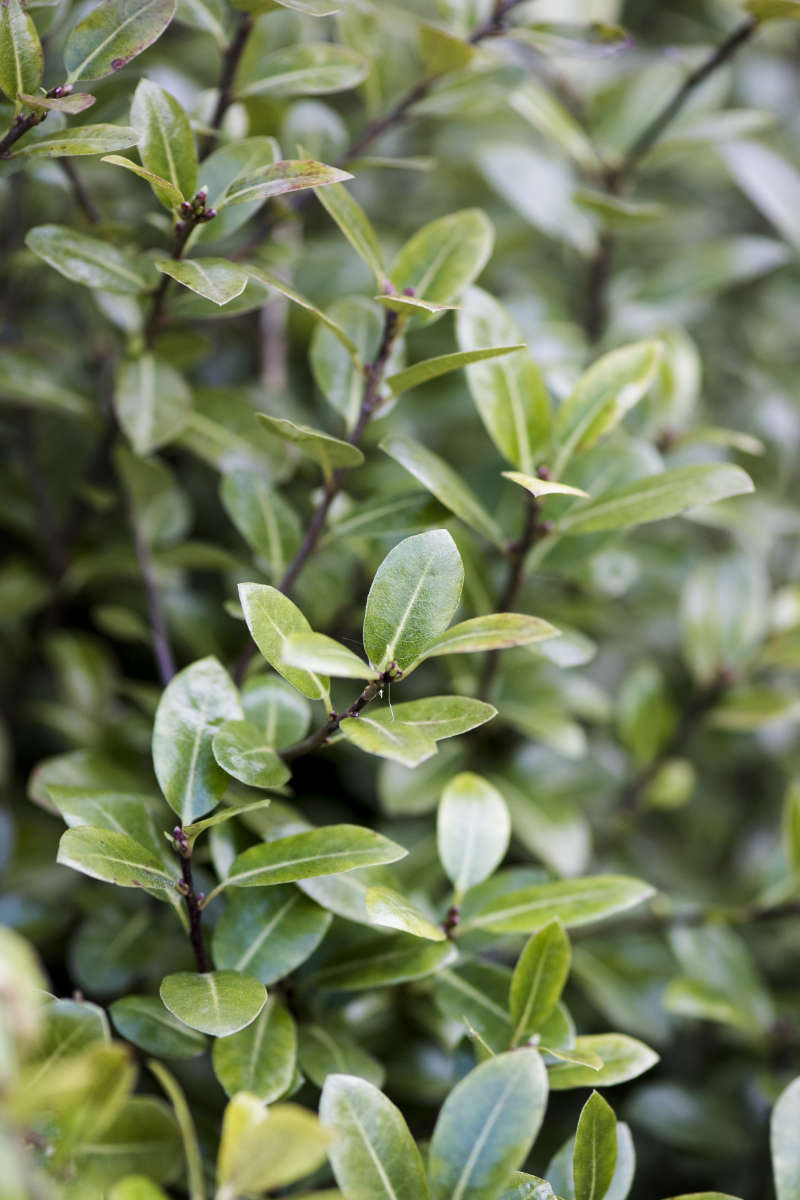
This compact evergreen can be easily clipped to hedge forms, providing bright green foliage which can be trimmed in late summer.
6. Phillyrea angustifolia
This makes a great topiary alternative to box as it is an easily clipped evergreen shrub, and can also be planted to make neat hedging.
7. Berberis darwinii ‘Nana‘
This evergreen with little spiky holly-like leaves is perfect as a low hedge, but also produces striking orange-yellow flowers from April to May, followed in autumn by purple-black fruits which the birds love.
The RHS is asking those who have box tree caterpillar in their gardens to report it as part of its ongoing citizen science survey to help the charity better understand the caterpillars’ spread. For details go to www.rhs.org.uk.
How to choose the right tree for your garden
Best-selling box blight treatment
Stuck for inspiration? Check out our list of best-selling Amazon products!
No products found.
You may be interested in…
This article may include affiliate links to products and services where we may receive a small fee to support the running of this site if you make a purchase or is a sponsored article from one of our select editorial partners providing valuable advice and information to our readers.
































































My mimosa tree seems to be dying. I have just returned from 6 weeks away and 15 box plants died. Could this tree also have the box Bligh?